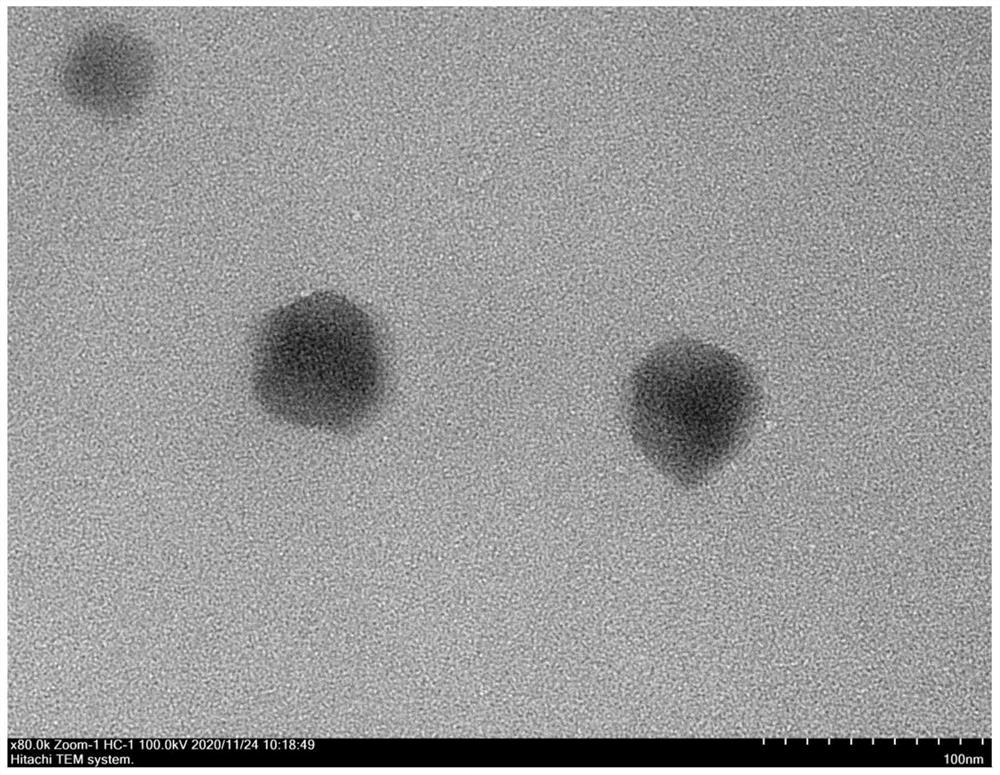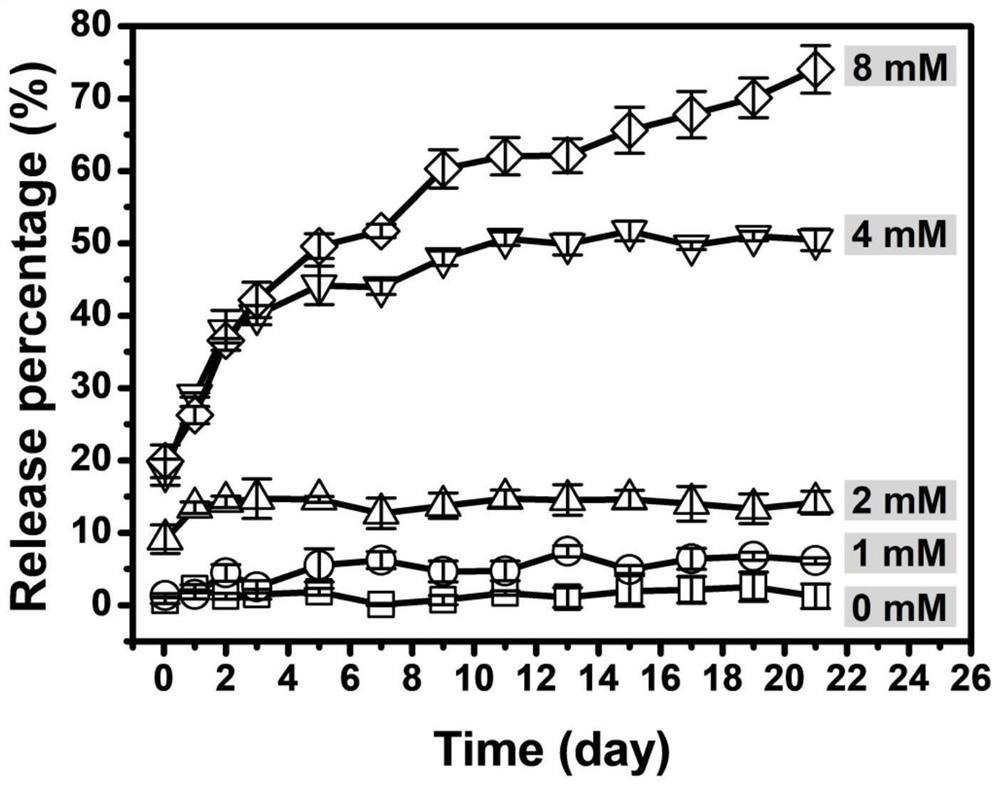Sulfate reducing bacteria metabolism microenvironment response type composite coating and preparation method thereof
A composite coating and micro-environment technology, applied in coatings, epoxy resin coatings, anti-corrosion coatings, etc., can solve the problems of bacterial resistance and biological toxicity destroying the marine environment and ecological order, and achieve excellent microbial corrosion protection capabilities , cost avoidance, good compatibility effect
- Summary
- Abstract
- Description
- Claims
- Application Information
AI Technical Summary
Problems solved by technology
Method used
Image
Examples
Embodiment 1
[0043] Example 1 The sulfate-reducing bacteria metabolic microenvironment-responsive composite coating provided in this example mainly includes: an antibacterial surface layer doped with micro-environment-responsive nanoparticles for sulfate-reducing bacteria metabolism and encapsulated with a bactericide, and an antibacterial surface layer doped with encapsulation Anticorrosion primers of microenvironment-responsive nanoparticles of sulfate-reducing bacteria with corrosion inhibitors.
[0044]Among them, the sulfate-reducing bacteria metabolic microenvironment-responsive nanoparticles use ZIF-90 as the skeleton material, and the antibacterial agent 4,5-dichloro-N-octyl-4-isothiazoline- 3-ketones and the corrosion inhibitor benzotriazole.
[0045] The amount of sulfate-reducing bacteria metabolic microenvironment-responsive nanoparticles added was 4% of the mass of antibacterial surface layer base material and anti-corrosion bottom base material.
[0046] The specific prepara...
Embodiment 2
[0054] Example 2 The sulfate-reducing bacteria metabolic microenvironment-responsive composite coating provided in this example mainly includes: an antibacterial surface layer doped with sulfate-reducing bacteria metabolic microenvironment-responsive nanoparticles encapsulated with a fungicide and doped encapsulation Sulfate-reducing bacteria with corrosion inhibitors metabolize microenvironment-responsive nanoparticles for anti-corrosion primers.
[0055] Among them, the sulfate-reducing bacteria metabolic microenvironment-responsive nanoparticles use ZIF-90 as the skeleton material, and the antibacterial agent 4,5-dichloro-N-octyl-4-isothiazoline- 3-ketones and the corrosion inhibitor benzotriazole.
[0056] The amount of sulfate-reducing bacteria metabolic microenvironment-responsive nanoparticles added was 6% of the mass of antibacterial surface layer base material and anti-corrosion bottom base material.
[0057] The specific preparation method and steps of the sulfate-r...
Embodiment 3
[0066] Example 3 The sulfate-reducing bacteria metabolic microenvironment-responsive composite coating provided in this example mainly includes: an antibacterial surface layer doped with bactericide-encapsulated sulfate-reducing bacteria metabolic microenvironment-responsive nanoparticles and doped encapsulation Sulfate-reducing bacteria with corrosion inhibitors metabolize microenvironment-responsive nanoparticles for anti-corrosion primers.
[0067] Among them, the sulfate-reducing bacteria metabolic microenvironment-responsive nanoparticles use ZIF-90 as the skeleton material, and the antibacterial agent 4,5-dichloro-N-octyl-4-isothiazoline- 3-ketones and the corrosion inhibitor benzotriazole.
[0068] The amount of sulfate-reducing bacteria metabolic microenvironment-responsive nanoparticles added was 8% of the mass of antibacterial surface layer base material and anti-corrosion bottom base material.
[0069] (1) Preparation of DCOIT@ZIF-90 nanoparticles
[0070] Weigh 3...
PUM
| Property | Measurement | Unit |
|---|---|---|
| size | aaaaa | aaaaa |
| particle diameter | aaaaa | aaaaa |
Abstract
Description
Claims
Application Information
 Login to View More
Login to View More - R&D Engineer
- R&D Manager
- IP Professional
- Industry Leading Data Capabilities
- Powerful AI technology
- Patent DNA Extraction
Browse by: Latest US Patents, China's latest patents, Technical Efficacy Thesaurus, Application Domain, Technology Topic, Popular Technical Reports.
© 2024 PatSnap. All rights reserved.Legal|Privacy policy|Modern Slavery Act Transparency Statement|Sitemap|About US| Contact US: help@patsnap.com










